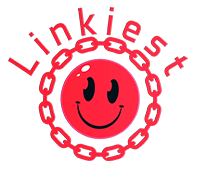1. At its greatest extent, in 1920, the British Empire was the largest empire in history.

It was enormous – comprising some 23% of the Earth land mass, 13.7 million square miles, and inhabited by over 412 million people. The British had possessions in every continent, including Antarctica. As a result, it became known as the ‘Empire on which the sun never sets’
2. It began in the 16th century with the establishment of colonies in the Americas.

The discovery of the New Work by European explorers at the end of the 15th century began a rush for land acquisitions among the great European powers. The continent of Europe was full of well-established nations, so the lure of (in the view of the Europeans) unclaimed territory across the Atlantic was too tempting. The British founded colonies in the Caribbean islands, and then in 1607 a colony a Jamestown, Virginia. This marked the start of a century of conflict with Spain and France over the control of the North American continent, a conflict which left the British as the dominant power.
3. It was partly a private enterprise

Set up in 1600 to pursue trade with the East Indies (modern day maritime East Asia), the East India Company became a powerhouse of the British Empire. It controlled trade with China, Japan, and India, eventually using its private army to seize control of the sub-continent on behalf of the British Crown. In 1757, it was given the job of administering India in what was an early act of privatisation. Over time it became known for its oppressive activities and in 1857 a sizable rebellion started in India as a response to the abuses of the East India Company. After much violence the rebellion was put down by the British Army. The Company lost its mandate to govern India and was effectively dismantled in the aftermath of the rebellion, control of India passing back to the British Government.
4. It reached its zenith when Queen Victoria was proclaimed Empress of India in 1877

The middle of the 19th century was a period of consolidation for the Empire. Unrivalled in naval power and the biggest trading bloc in the world, the crowning of Victoria as the Empress of her largest and most prestigious possession marked the highpoint of the Empire and the beginning of the true Victorian era.
5. It was largely run by the Scots

An empire as large as the British Empire needs a lot of administration. For many years, a life as a colonial administrator was a respected and much sought-after career. In some areas of colonial life, the Scots played a disproportionate part in growing and running the British Empire. For a nation that is a fraction the size of England in terms of population, there was Scottish domination of the administrators of India, the doctors and other medical professionals, the teachers, the missionaries, engineers, surveyors, and bookkeepers of the Empire.
6. There’s a former member’s club

The Commonwealth of Nations used to be the British Commonwealth, and before that was the British Empire. Officially, it is an intergovernmental organisation of 52 member states that are mostly former territories of the British Empire. It operates by consensus and there is a central secretariat. The organisation address matters of mutual concern and trade. There is also a quadrennial Commonwealth Games. The Commonwealth is headed by Queen Elizabeth II.
7. The Empire was largely dismantled in the 1950s and 1960s.

The Second World War spelt the end of the British Empire. While the First World War had shown people the folly of imperialism, the Empire was too big and too valuable for the British to simply abandon. After 1945 though, there came increasing pressure from the colonies, particularly India, for not just the more autonomous dominion status enjoyed by Canada and Australia, but for full independence. The truth was that Britain could no longer afford the Empire, and so it began the long process of deconstruction. India gained independence in 1948, and for the following two decades the various colonies in Asia and Africa were granted independence. In 1997 Britain handed Hong Kong, which it had owned for 200 years, back to China.
8. Australia and Canada did not become fully independent until 1980s

The two nations had, along with New Zealand, been granted self-governing dominion status at the end of the 19th century. They were, to all intents and purposes, independent, and yet the British Parliament retained certain powers over the peoples of those nations. This gradually evolved to full independence, but still Britain reserved the right to legislate for Australia and Canada in certain circumstances, and the British courts still heard final appeals from the courts of the dominions. In 1982 for Canada, and 1986 for Australia, Britain finally renounced its control.
9. It still exists.

The Empire has not ended. Most of its former possessions have gained independence. Some have joined the Commonwealth and retain friendly relations with the former imperial power. However, Britain still has 13 overseas possessions over which it has governing power. They are Anguilla, Bermuda, British Antarctic Territory, British Indian Ocean Territory, British Virgin Islands, Cayman Islands, Falkland Islands, Gibraltar, Montserrat, Pitcairn Islands, Saint Helena, Ascensionand Tristan da Cunha, South Georgia and the South Sandwich Islands, and Turks and Caicos Islands.
10. Not everyone wants independence.

The Falkland Islands are claimed by Argentina, and Gibraltar is claimed by Spain. However, both British Overseas Territories are inhabited by people who are passionately loyal to Britain and the Queen. When referendums were held on independence in these territories in the early 2000s the majority in favour of remaining part of the British Empire were over 99% in both votes.

